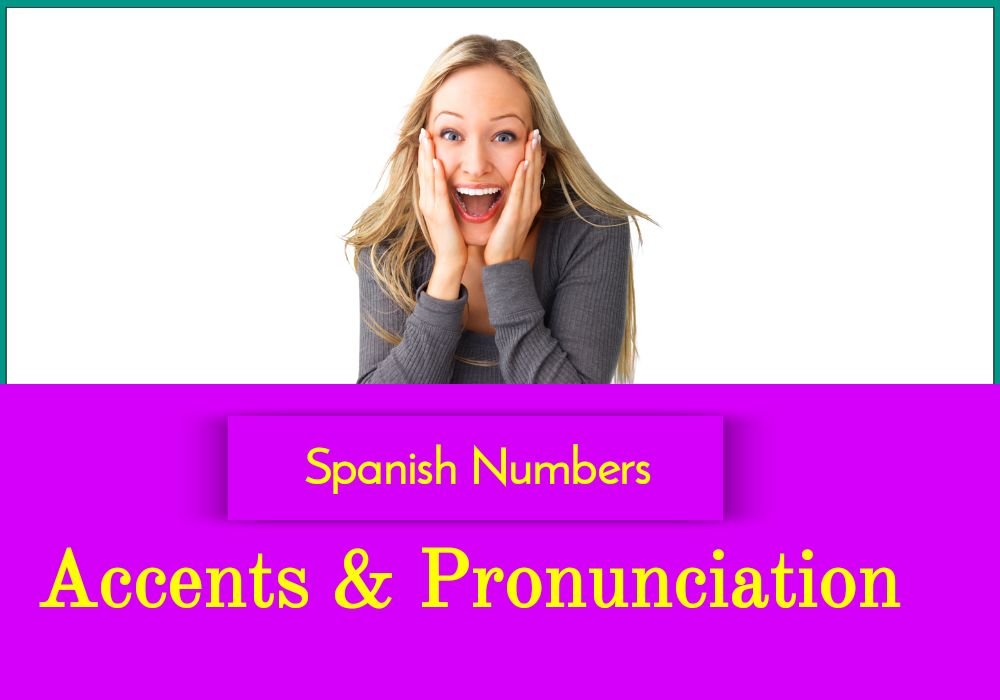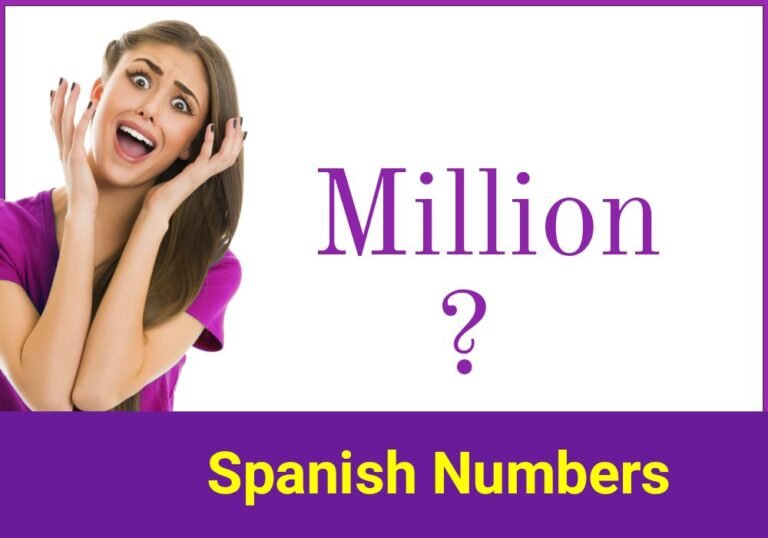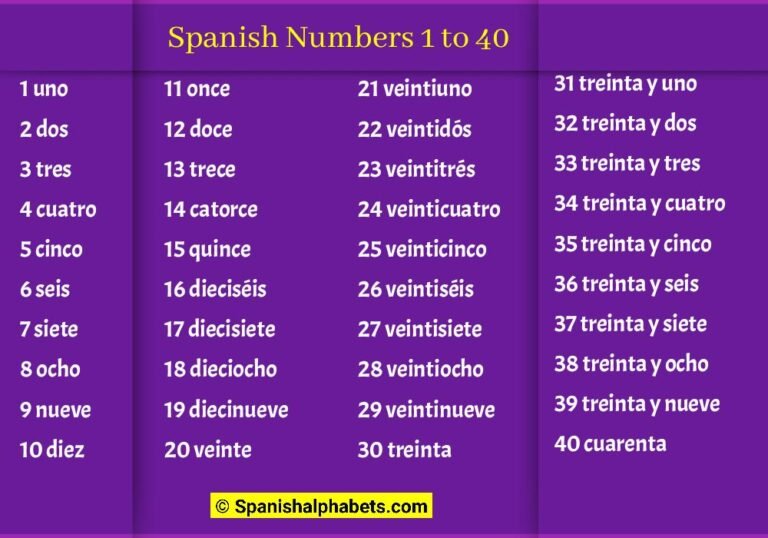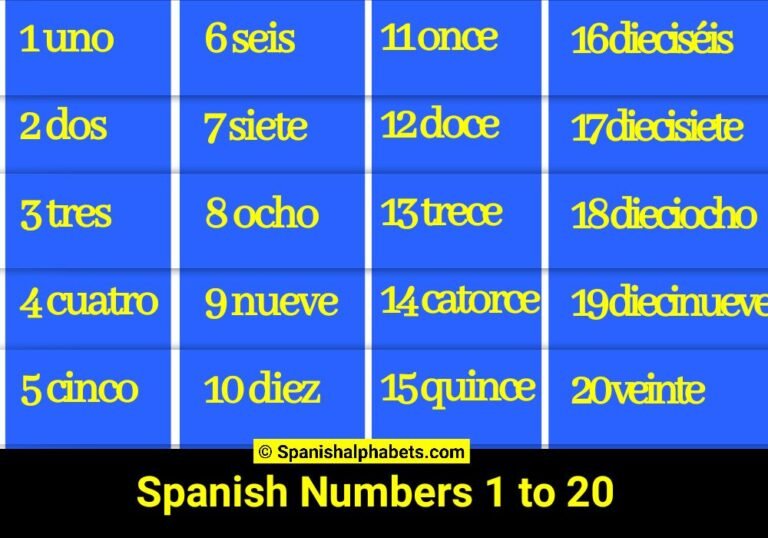Spanishalphabets.com is one of the best blogs for learning Spanish numbers. This page contains a wealth of information on how to say numbers in Spanish with accents and proper pronunciation.
By following the simple tips and tricks on this website, you’ll be able to quickly improve your Spanish language skills!
Learning how to say Spanish numbers is essential for anyone wanting to learn the language. There are a few things to remember when learning to say Spanish numbers.
First, the numbers one through ten all have masculine and feminine forms. The masculine form refers to a group of males or something considered masculine, such as the sun.
The feminine form refers to a group of females or something considered feminine, such as the moon.
Second, the accent always falls on the second-to-last syllable when pronouncing Spanish numbers.
For example, the number “uno” is pronounced “OO-noh” with an accent on the “oo” sound. Remember that some irregular numbers in Spanish need to follow these rules.
How to Say Spanish Numbers?
If you want to learn how to say Spanish numbers, you’ve come to the right place. This article gives you a crash course on everything you need about Spanish numbers.
We’ll start with the basics, like 1-10, then move on to more significant numbers. We’ll also touch on some common phrases that use numbers.
In Spanish, the numbers from 1 to 10 are as follows: uno, dos, tres, cuatro, cinco, seis, siete, ocho, nueve and diez. The numbers 11 and 12 are once again irregular: once and doce.
From 13 onwards, the pattern is regular: trece, catorce…etc., until 19. For 20 and all the multiples of 10 up to 100 – veinte (20), treinta (30), cuarenta (40), cincuenta (50), sesenta (60), setenta (70), ochenta (80) and noventa (90) – again the pattern is regular.
How to Add Accents to Spanish Numbers
Spanish numbers are different from English numbers. For one, they use masculine and feminine forms. And, of course, there are those pesky accents. But don’t worry; it’s not so bad once you get the hang of it.
Here are a few tips on how to add accents to Spanish numbers:
- The accent goes on the second-to-last syllable if the word ends in a vowel, n, or s. For example, 21 (veintiuno) would be written veintiún. 52 (cincuenta y dos) would be written cincuentá y dos.
- The accent goes on the last syllable if the word ends in any other letter.
- You must use an accent mark if the number is between 1 and 10. For example, “2” is “dos,” with the accent over the “o.”
- If the number is 10 or higher, you do not need an accent mark unless followed by a comma or period, in which case you should use an accent mark. For example, “10” is “Diez,” but “10” is “Diez,” with the accent over the “i.”
How to Pronounce Spanish Numbers: A Simple Guide
Spanish numbers might seem difficult at first, but with some practice, they’re okay.
This guide will help you learn how to pronounce Spanish numbers so that you can start using them in your everyday life.
Here are a few tips to remember when pronouncing Spanish numbers:
- The number two is pronounced “dos,” not “duh-ohs.”
- The number three is pronounced “tres” not “tray.”
- The number four is pronounced “cuatro” not “kwon-trow.”
- The number five is pronounced “cinco” not “seen-koh.”
- The number six is pronounced “seis” not “say.”
How to quickly write Spanish numbers
Spanish numbers 1-10 are easy to write because they follow a simple pattern.
All you have to do for numbers 1-5 is add a circumflex accent mark above the number 5, and voila! You’re done. For 6-10, you draw a line through the middle of the numbers 6 and 7, 8 and 9, respectively. 10 is written as a lowercase letter, “j.”
Now let’s move on to Spanish numbers 11-19. These follow the same pattern as 1-10 with a tiny exception. Instead of adding a circumflex accent mark, you will add an acute accent mark (‘). So 11 would be written as “once,” 12 as “doce,” etc.
How do numbers work in Spanish words?
Numbers play an important role in Spanish words. They can be used to indicate quantity, or they can be used to modify the meaning of a word. In some cases, numbers can also be used to create new words.
When it comes to quantity, Spanish numbers are generally easy to understand. They follow the same pattern as English numbers, with a few exceptions.
For example, the number “uno” (1) is masculine, while the number “dos” (2) is feminine. This can be confusing for English speakers, who are used to all numbers being either masculine or feminine.
Numbers can also be used to modify the meaning of a word. For example, the word “caballo” (horse) changes to “Caballos” (horses) when there is more than one horse involved.
Conclusion Points
There are a few things to remember when it comes to Spanishnumbers. First and foremost, the accent’s placement can change a word’s meaning.
For example, “el” without an accent means “the,” but with an accent over the “e,” it means “he/she/it.”
Additionally, words that end in vowels or -n usually carry the stress on the next-to-last syllable. In contrast, words that end in consonants typically have stress on the last syllable.
Some general rules can help you know where to place the accent mark.
When it comes to knowing where to place the accent mark, a few general rules can help. First and foremost, remember that the accent’s placement can change a word’s meaning.
FAQs
If you want to learn to say Spanish numbers with accents and pronunciation, look at Spanishalphabets.com.
Our helpful FAQs section will give you all the information you need to get started.
Plus, we offer related questions and answers, so you can ask us anything you need clarification. Don’t hesitate to start learning today!
Question (1) – Why is Learning Spanish Numbers Important?
Answer: There are a few reasons why learning Spanish numbers is essential. First, numbers are a fundamental part of any language and are used in many everyday situations.
For example, when telling time, counting money, or discussing measurements. Second, being able to count in Spanish can be very helpful when traveling to Spanish-speaking countries. It can make it easier to communicate with locals and get around.
Learning numbers can also help you learn other aspects of the Spanish language more easily.
Question (2) – Why are Spanish numbers so confusing?
Answer: Spanish has a different way of representing numbers than English.
In Spanish, the number 26 would be written as veintiséis, which can be confusing for English speakers who are used to seeing the number 26 written as twenty-six.
This difference is because Spanish uses a different number system than English. In Spanish, the number 26 is composed of 20 (veinte) and 6 (seis).
Question (3) – Why does Spanish have two words for 99?
Answer – In Spanish, there are two words for 99- cien and noventa y nueve. This is because when numbers are said in Spanish, the tens and ones places are always separated.
In the number 99, the 9 in the tens place is said first, followed by the 9 in the ones place. Cien means 100, so saying cien and noventa y nueve together is like saying 199.
Question (4) – Why are Spanish numbers so perplexing?
Answer: The Spanish number system is often perplexing to native English speakers because it is based on the decimal system but uses a different word for “zero” than English.
In addition, the way numbers are grouped in Spanish is different than in English. For example, in Spanish, numbers 70 to 79 are grouped as “setenta y uno, setenta y dos, setenta y tres,” etc.
Question (5) – Guess which Spanish numbers are the most common.
Answer: One might think that the most common Spanish numbers would be 1, 2, 3, 4, 5, 6, 7, 8, 9, and 10 since those are the first numbers typically learned in any language.
However, a study of Spanish usage patterns reveals that the most common numbers are much higher. The three most common numbers in Spanish are 40, 50, and 60.
Question (6) – Who knew that learning Spanish numbers could be so Beneficial?
Answer: Spanish is one of the most widely spoken languages in the world. It is estimated that there are approximately 400 million Spanish speakers worldwide.
Spanish is also the second most widely spoken language in the United States. Learning Spanish numbers can be beneficial for many reasons.
For one, it can help you to communicate more effectively with Spanish speakers.
Additionally, learning Spanish numbers can help you better understand the culture and the people who speak the language.







Empowering students with language.